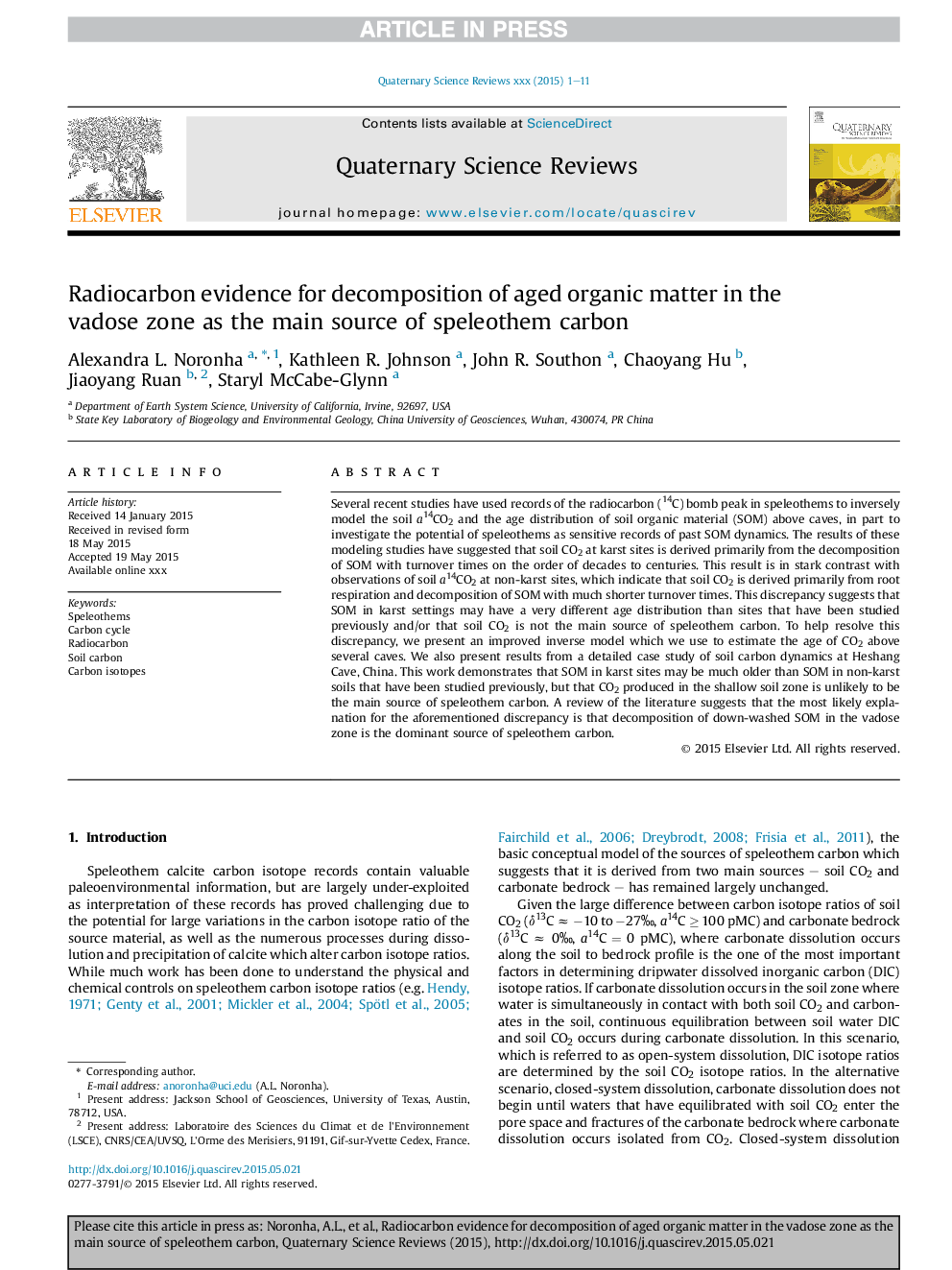| Article ID | Journal | Published Year | Pages | File Type |
|---|---|---|---|---|
| 6445790 | Quaternary Science Reviews | 2015 | 11 Pages |
Abstract
Several recent studies have used records of the radiocarbon (14C) bomb peak in speleothems to inversely model the soil a14CO2 and the age distribution of soil organic material (SOM) above caves, in part to investigate the potential of speleothems as sensitive records of past SOM dynamics. The results of these modeling studies have suggested that soil CO2 at karst sites is derived primarily from the decomposition of SOM with turnover times on the order of decades to centuries. This result is in stark contrast with observations of soil a14CO2 at non-karst sites, which indicate that soil CO2 is derived primarily from root respiration and decomposition of SOM with much shorter turnover times. This discrepancy suggests that SOM in karst settings may have a very different age distribution than sites that have been studied previously and/or that soil CO2 is not the main source of speleothem carbon. To help resolve this discrepancy, we present an improved inverse model which we use to estimate the age of CO2 above several caves. We also present results from a detailed case study of soil carbon dynamics at Heshang Cave, China. This work demonstrates that SOM in karst sites may be much older than SOM in non-karst soils that have been studied previously, but that CO2 produced in the shallow soil zone is unlikely to be the main source of speleothem carbon. A review of the literature suggests that the most likely explanation for the aforementioned discrepancy is that decomposition of down-washed SOM in the vadose zone is the dominant source of speleothem carbon.
Related Topics
Physical Sciences and Engineering
Earth and Planetary Sciences
Geology
Authors
Alexandra L. Noronha, Kathleen R. Johnson, John R. Southon, Chaoyong Hu, Jiaoyang Ruan, Staryl McCabe-Glynn,
